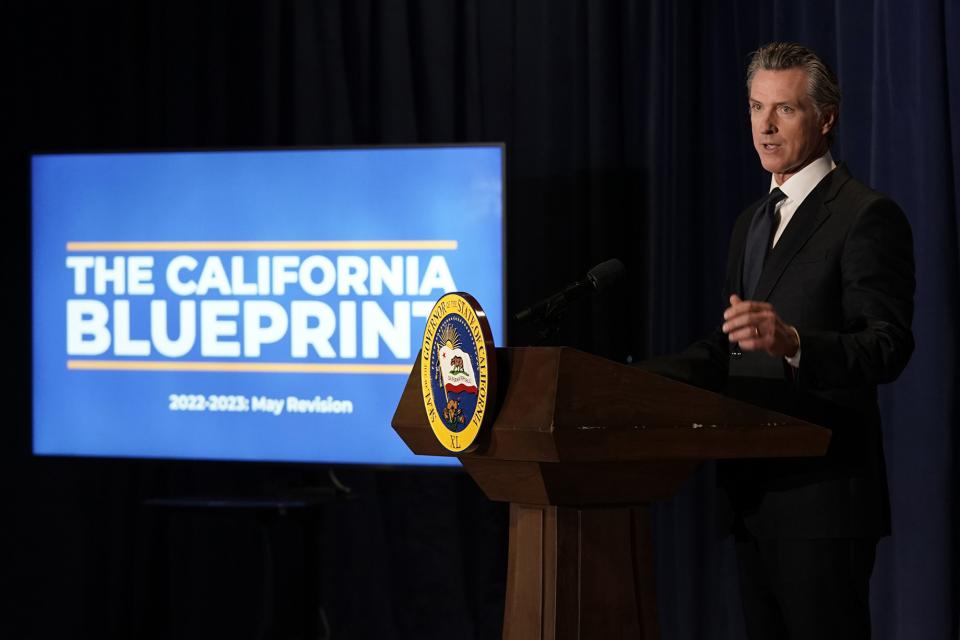Funding for part-time community college faculty healthcare secured
Governor Newsom signed the final state budget on Friday, June 30 after the governor and state legislators reached agreement on the 2022-23 budget over the weekend. The deal includes record levels of funding for public education and the $200 million to support part-time faculty healthcare that CFT has been championing throughout this budget process.
Numerous additional proposals and programs were funded, including teacher pipeline and workforce development initiatives. (Watch for details in a forthcoming CFT Research Brief.)
What’s more, most working Californians will see some financial relief. The budget deal includes direct tax refunds that will distribute $9.5 billion to 95% of California taxpayers. The amount of the rebates vary by income and whether or not the recipient has dependents but will provide some refund for those making up to $250,000 per year (or $500,000 if filing jointly). A low-income family with children would receive the maximum amount of $1,050.
The budget also includes a $500 million program to support first-time homebuyers with down payment subsidies.
Please see below for a topline summary of the education budget.
Early Childhood Education
- The budget includes funding to continue in 2022-23 the waivers for family fees for child care and hold harmless policies established during the pandemic.
- Expands new child care access with $1 billion for 145,000 slots, up from 120,000 in 2021-22.
- $100 million is allocated to infrastructure for child care facilities.
- State Preschool programs receive $486 million for improved adjustment factors for three-year-olds, students with exceptional needs, and mental health services.
- The Inclusive Early Education Expansion program receives an additional $250 million one-time funds.
TK-12 Schools
- Local Control Funding Formula will increase by 13% overall. This includes funding for a 6.56% statutory COLA plus $4.32 billion above that amount.
- Declining enrollment is recognized by a change to the LCFF that allows districts to consider the current year, prior year, or an average of prior three years when determining ADA for the funding calculations. The deal also allows districts, county offices of education, and charter schools to use pre-pandemic ADA for the 2021-22 year as long as they offered independent study for students who had to be in quarantine for COVID-19. These protections are estimated to provide $2.8 billion in additional funding.
- Two large block grants are included:
- A $7.9 billion Learning Recovery Emergency block grant is to be allocated on a UPP-based formula to support learning recovery, school staff, and wellness needs of students and staff; it will be available for expenditure through 2027-28. These funds can support: Instructional learning time, providing summer school or intersessional instructional programs, or taking any other action that increases or stabilizes the amount of instructional time or services provided to pupils, or decreases or stabilizes staff-to-pupil ratios, based on pupil learning needs; implementation, expansion or enhancement of learning support; addressing other barriers to learning, such as providing health, counseling or mental health services, school meals, or programs to address trauma.
- A $3.6 billion Arts, Music, and Instructional Materials discretionary block grant is to be allocated according to ADA and to provide funds for learning tools in arts, music, instructional materials, and multilingual library books. Funds can also be used to cover operational costs, including retirement and health care cost increases and COVID-19 related expenses like PPE. Funds available through 2025-26.
- The Expanded Learning Opportunities Program funding is increased to a total amount of $4 billion ongoing funds, up from $1.7 billion. This provides $2,750 per unduplicated pupil in schools that are required to offer services to all students and $1,250 per unduplicated pupil in schools serving half.
- The expansion of Transitional Kindergarten is funded and Proposition 98 is rebenched accordingly; funding includes $383 million to reduce student to adult ratios in every TK class plus funding for planning and implementation grants and the Preschool, TK, and Full-Day Kindergarten Facility program.
- County Offices of Education will receive an additional LCFF increase of $101.2 million on top of the 6.56% COLA.
- Categorical programs outside of the LCFF receive the 6.56% COLA, as required by statute (e.g., Adult Education, Special Education, others).
- Special Education funding also increases by $500 million, ongoing, to increase the base rates to $820 million.
Classified
- Home-to-school transportation receives a significant increase of $637 million; this allows LEAs to receive 60% of their reimbursed costs and a COLA. There is also $1.5 billion for zero-emissions school buses.
- Universal school meals are funded with enhanced reimbursement rates and kitchen infrastructure grants.
- The Classified Employee Summer Assistance Program for K-12 is funded with $90 million in ongoing funds. A new program for community college classified employees is also established and funded with $10 million ongoing funds.
Community Colleges
- The Part-Time Faculty Health Insurance Program was funded with an additional $200 million to expand healthcare coverages and incentivize more districts to offer more coverage. There is also language in the budget that signals the Legislature’s intent to consider changes to the existing program that CFT has been advocating for. These changes are expected to be incorporated into a trailer bill in August.
- A base increase of $600 million for the apportionments. This is in addition to the 6.56% COLA.
- A $650 million Flexible Block Grant is included to support basic needs, mental health, faculty and staff professional development, discharging of unpaid student fees, and other COVID-19 related support. The grant will be allocated according to FTES.
- The budget includes $840.6 million for deferred maintenance at community colleges, with funds allocated according to FTES.
- A new funding floor based on the districts’ hold harmless level at the end of 2024-25 is created to address concerns that districts will experience fiscal declines when the current provision expires. Starting in 2025-26, districts would be funded at their SCFF-generated (Student-Centered Funding Formula) amount that year or their hold harmless amount in 2024-25, whichever is higher. Whereas SCFF rates would continue to receive a COLA in subsequent years, a district’s hold harmless amount would not grow.
- The Classified Employee Summer Assistance Program for community college classified employees is established and funded with $10 million ongoing funds.
University of California
- The budget provides a base increase of 5% or $200.5 million for the University of California.
- Enrollment growth is funded with $68.8 million and targets are set for up to 1,500 previously unfunded FTES and at least 4,370 new California students by 2023-24.
- The UC Labor Centers and Occupational Safety and Health Programs are funded with $13 million ongoing funds.
Higher Education — Student Financial Aid and Housing
- Expansive reform to the state’s Cal Grant program is included in the budget deal but implementation will be determined in May 2024 and is contingent on state revenue. The reforms add eligibility for 150,000 more students and increase award amounts, including grants for students attending independent colleges and universities. Additional funding is provided to support the Middle Class Scholarship program in 2023-24.
- The budget includes $2 billion to fund student housing projects at all three higher education systems.
Please contact Aimee Shreck or Tiffany Mok if you have questions about specific programs.


